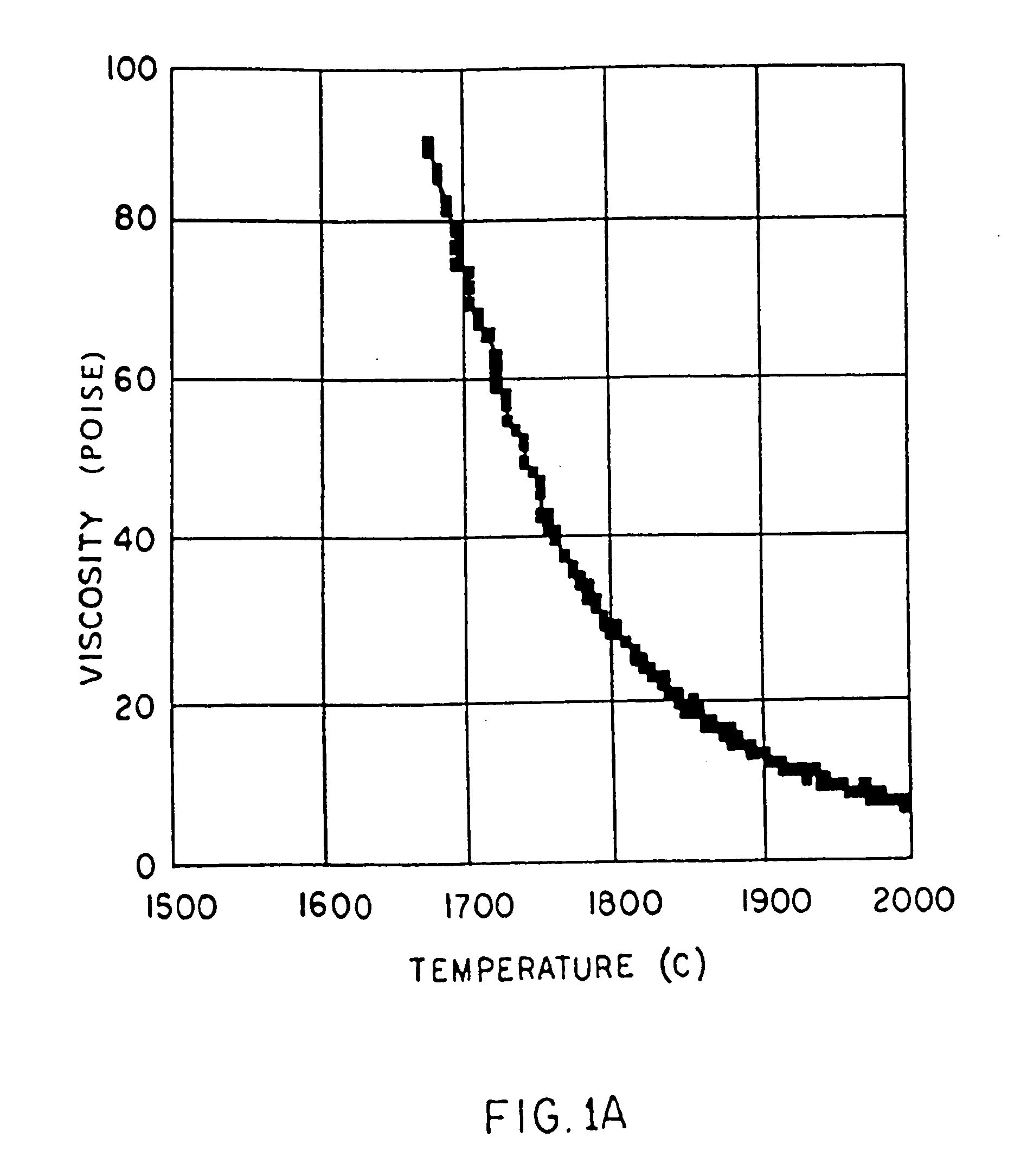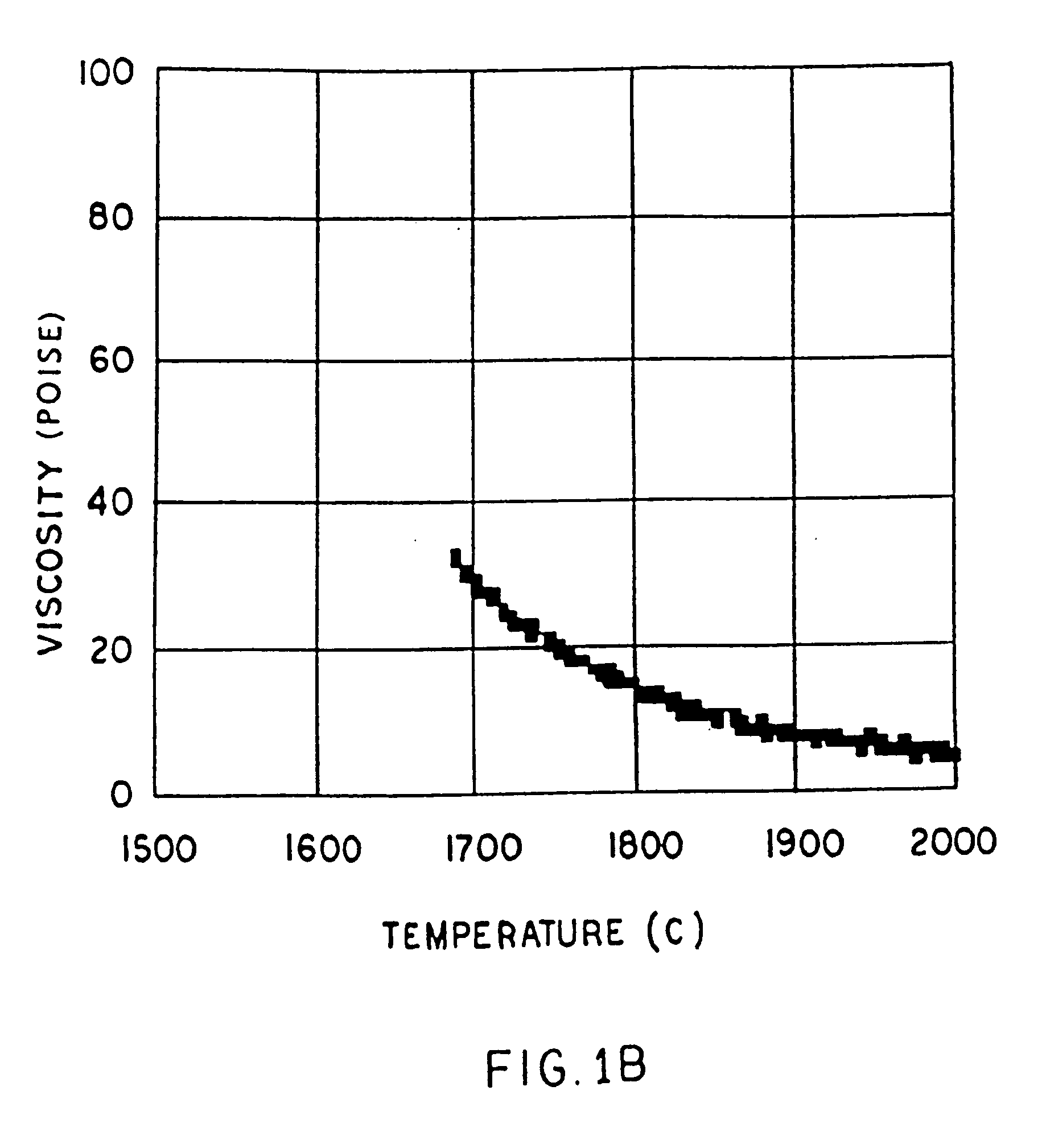High temperature resistant vitreous inorganic fiber
a technology of vitreous inorganic fibers and high temperature resistance, which is applied in the field of high temperature resistant vitreous inorganic fibers, can solve the problems of low use temperature limit, inability to maintain the integrity of physiological fluids, and insufficient use temperature limit of these materials
- Summary
- Abstract
- Description
- Claims
- Application Information
AI Technical Summary
Benefits of technology
Problems solved by technology
Method used
Image
Examples
Embodiment Construction
[0052] A low shrinkage, high temperature resistant vitreous inorganic fiber having a use temperature over at least 1000° C., which maintains mechanical integrity up to the use temperature and which is non-durable in physiological fluids, comprising the fiberization product of silica, magnesia, calcia, and lanthanum or a lanthanide series element-containing compound is provided. The inorganic vitreous fiber is useful as a heat (thermal) or sound (acoustical) insulation material.
[0053] In order for an inorganic composition to be a viable candidate for producing a satisfactory high temperature inorganic fiber product, the fiber to be produced must be manfacturable, sufficiently soluble in physiological fluids, and capable of surviving high temperatures with minimal shrinkage and minimal loss of integrity.
[0054]“Viscosity” refers to the ability of a glass melt to resist flow or shear stress. The viscosity-temperature relationship is critical in determining whether it is possible to fi...
PUM
| Property | Measurement | Unit |
|---|---|---|
| temperature | aaaaa | aaaaa |
| weight percent | aaaaa | aaaaa |
| temperature | aaaaa | aaaaa |
Abstract
Description
Claims
Application Information
 Login to View More
Login to View More - R&D
- Intellectual Property
- Life Sciences
- Materials
- Tech Scout
- Unparalleled Data Quality
- Higher Quality Content
- 60% Fewer Hallucinations
Browse by: Latest US Patents, China's latest patents, Technical Efficacy Thesaurus, Application Domain, Technology Topic, Popular Technical Reports.
© 2025 PatSnap. All rights reserved.Legal|Privacy policy|Modern Slavery Act Transparency Statement|Sitemap|About US| Contact US: help@patsnap.com


